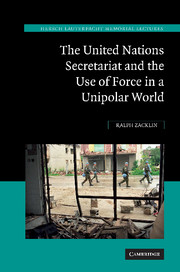Summary
One of the unresolved dimensions of the Yugoslav wars of the early 1990s was the situation in Kosovo, the southern province of Serbia which had a predominantly ethnic Albanian and Muslim population. To say that the conflict in Kosovo has had a long history would be an under-statement. The first battle of Kosovo took place in 1389; the second in 1448. The significance of this historical attachment to Kosovo on the part of the Serbs was a factor which could only be overlooked at one's peril whenever discussions or negotiations took place with representatives of the former Yugoslavia or Serbia. The Kosovo conflict, which came to a head in 1996–9 between Serbian and Yugoslav security forces and the Kosovo Liberation Army (KLA), an ethnic Albanian guerrilla force, ended when the North American Treaty Organization (NATO) intervened in 1999. The use of force by NATO in the period between 24 March and 10 June 1999 gave rise to considerable debate in the international community and nowhere was this debate more polarized than within the United Nations Secretariat.
Prior to the direct of involvement of the Security Council in Kosovo in 1998 the situation there had been viewed as a regional European problem and one best dealt with by the International Conference on the Former Yugoslavia and the Organization for Security and Cooperation in Europe (OSCE).
- Type
- Chapter
- Information
- The United Nations Secretariat and the Use of Force in a Unipolar WorldPower v. Principle, pp. 91 - 134Publisher: Cambridge University PressPrint publication year: 2010

